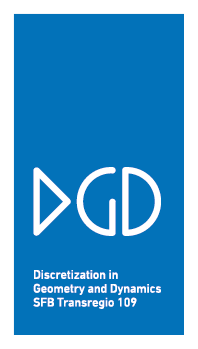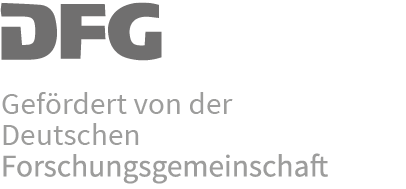Conducting research in the area of discretization in geometry and dynamics requires running numerous mathematical experiments and visualizing their results; these visualizations and simulations are valuable tools for gaining a deeper understanding of the structures under consideration. To perform such experiments and simulations requires special software tools, specifically tailored for these purposes - these tools need to provide not only great flexibility and interactivity but also versatile visualization abilities.
On the other hand, visualization software works with discretized models, and developing it leads to interesting mathematical questions. The difficulties encountered in the implementation of a given theory shed light on any areas of incomplete understanding, and often lead to valuable new insights.
This proposed project - which is in a sense orthogonal to most of the other projects - will provide the scientific underpinnings as well as the software infrastructure for the computational side of the proposed SFB/Transregio. In this context, computation is always understood as a scientific task that asks for the transfer of mathematical concepts to a computational framework. Such transfer usually requires high expertise both in mathematics and in computer science. Very often, the development of mathematical software helps to sharpen and improve the underlying mathematical theory. In this sense, the proposed project C1 will work very closely with all the other projects that need experimentation and visualization.
Another very important side effect of developing such software tools for experiments and visualization is that they can also be used for demonstrations and to communicate the research to colleagues or even to a wider public. Thus the work in project C1 will be of special importance for project PR.
The software tools that the groups in Berlin and Munich bring into this project have already proven useful in all of these aspects. Our aim is to develop them further: to increase their interoperability and to adapt them to problems posed by the other projects of the proposed SFB/Transregio. Several of these projects will clearly require software support well beyond the resources of the individual projects. Since the different projects are intimately related thematically, by concentrating the software development efforts in project C1, we will obtain synergetic effects that will benefit the entire SFB/Transregio.
Specific tasks attacked by the software group will include:
• Tools for navigation on branched Riemann surfaces (A1, B1)
• Dynamic 3D interactivity (A1, A3)
• Visualization of continuous families of polytopes (A3)
• Flexible and fast representations of various kinds of discrete and continuous data (B3, B5)
• Interaction paradigms for the control of integration paths (A1, B1)
• Visualization of smooth surfaces and dynamic processes on them (A5)
• Visualization in spherical manifolds and cone metrics (A6)
By combining the strengths of the various software projects, we will obtain increased versatility. In particular, combining the interaction paradigms and fast prototyping techniques from Cinderella with the visualization capabilities of jReality will result in a very flexible tool for performing and controlling mathematical experiments.







